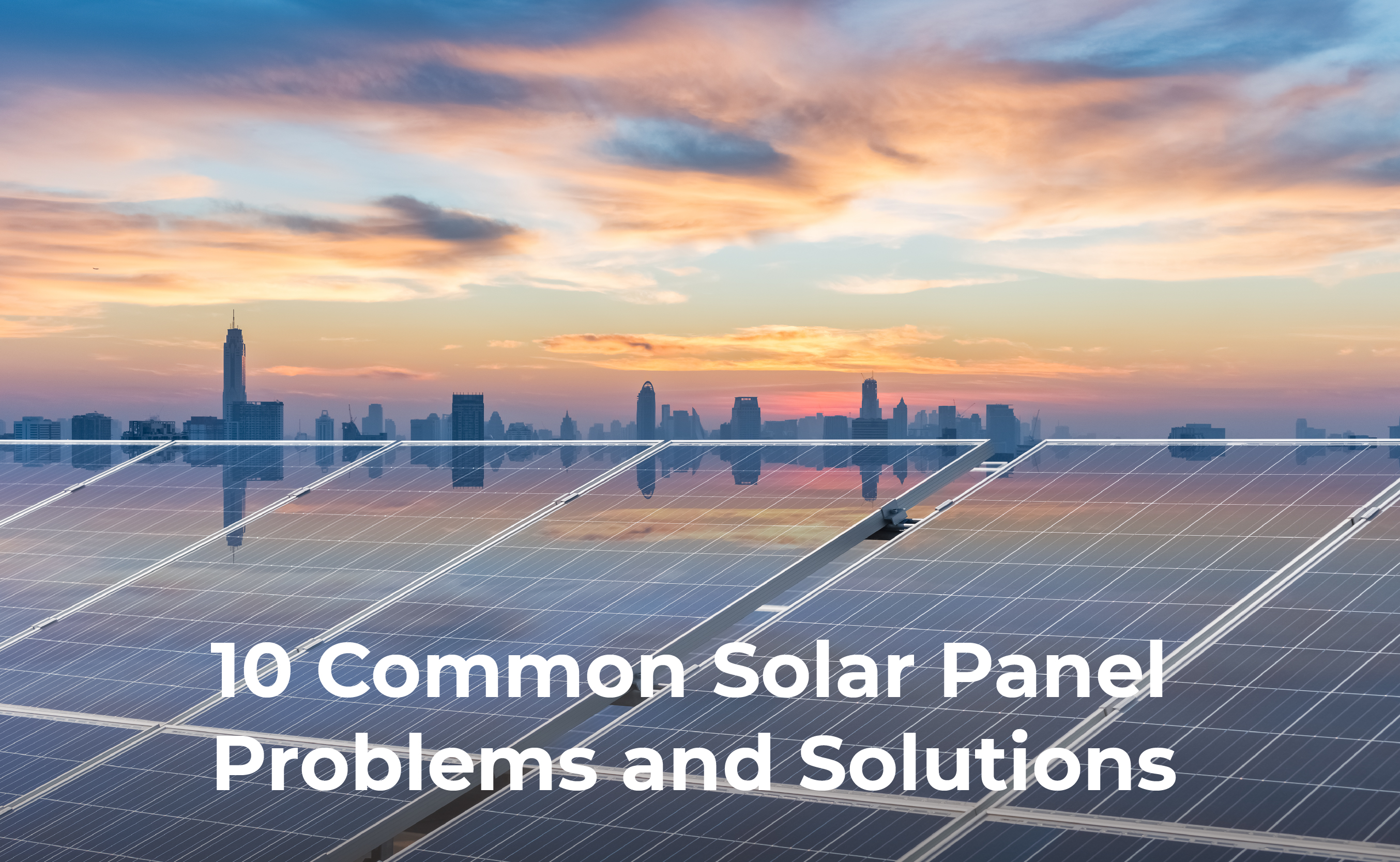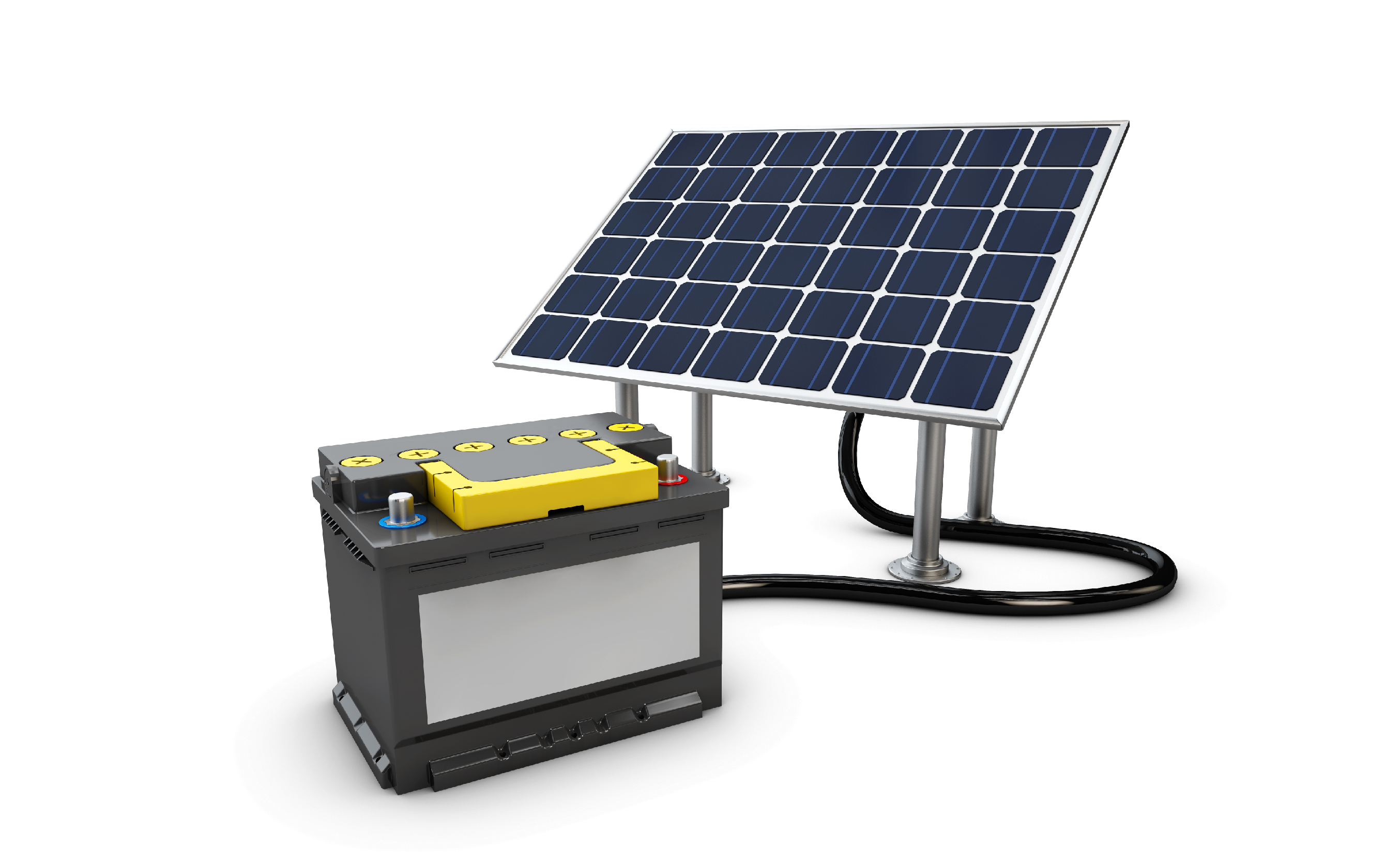10 Common Solar Panel Problems and Solutions

As with all technology, solar panels occasionally encounter problems with care and maintenance. Some problems can be fixed on your own, but others may require the services of a professional technician to provide repairs.
The key is to identify the problem and determine what should be done about it. Therefore, the following is 10 common problems that you may encounter with solar panels and how to fix them.
1. Inverter Problems
Problem:
The main function of an inverter is to convert the DC form of solar energy into AC form of usable electricity after the solar panels have received sunlight. These components are usually boxy in appearance and are usually stored upstairs.
While solar panels can last up to about 20 years, inverters need to be replaced frequently, as their effective life span is usually only 10-15 years.
The inverter is very important for the entire solar electric light and the solar panels simply cannot function without the inverter. Therefore, it is best to fix the inverter as soon as you notice it is damaged.
Solution:
Fortunately, most problems with inverters are easy to fix. We recommend seeking advice from the relevant professionals. After a power outage, if the inverter does not work, check if the switch is in the proper position. If the check is for damage to parts, then replace the parts promptly.
Some security cameras can also be charged by solar panels. For example, Reolink's latest release, the Argus 4 Pro, works seamlessly with the Reolink Solar Panel 2.
4k 180° Wire-free Color Night Vision Camera
4K UHD 180° Blindspot-free View; Color Vision Day and Night; 30% More Battery Life; Dual-band Wi-Fi 6; Smart detection.
2. Problems with Solar Panels on Roof
Problem:
The solar cells or photovoltaic (PV) cells that make up solar panels are very fragile, so microcracks can sometimes appear in the panels under natural conditions. Initially, these cracks are usually hard to detect, but over time, the cracks grow larger and become more visible. From not affecting the performance of the component, they gradually develop to the point where they affect the product's inability to be used.
As these cracks become larger, they can disrupt the flow of energy in the solar panel and reduce the energy output of the system, thus decreasing the efficiency of the solar power system. Unfortunately, once the microcracks become large enough to affect the production of electricity from the solar panel, they become nearly impossible to repair and your solar panel may need to be replaced.
Solution:
The solution we propose is that regular inspection and maintenance of solar panels, preferably left in the hands of professionals and teams, can solve the problem at the source before it develops too serious. If it is really necessary to replace the solar electric panels, then don't hesitate to do so.
3. Roof Damage
Problem:
Solar panel installations can sometimes seriously damage the materials underneath the roof. This is because of the piling and fixing operations that have to be carried out. On the contrary, sometimes they even provide some protection and support for the materials underneath. These effects are situation dependent.
However, loose or damaged roof tiles can still occur, so it is a good idea to check every now and then that the roof components are working properly.
Solution:
When installing, you can measure the structure of the house ahead of time and assess the best installation location where there will be no damage to the house. And when installing the solar panel racking can be padded with cushioning pads at the contact with the roof to reduce the pressure on the roof.
Once there is damage to the materials of the house, the best solution is to look for a remodeling team to fix it. And maintain the condition of your home on a regular basis.
4. PID Effect
Problem:
PID can also be described as Potential Induced Degradation (PID), the direct harm to the module is that a large number of charges are gathered on the surface of the cell, so that the passivation effect of the surface of the battery is aggravated, which leads to a reduction in the fill factor, open circuit voltage and short circuit current of the cell, and power attenuation of the battery module, the degree of attenuation can be up to 50% is a phenomenon that may occur in the solar cell panel.
Solution:
In order to prevent PID, in the installation of electric panels should be installed by professionals to install the panel, the installation environment to ensure that the panel is not affected by extreme temperatures. The panels should also be regularly inspected for any signs of degradation of the panels' photovoltaic energy conversion capability.
5. Snail Trail
Problem:
Snail tracks stay on the surface of the solar panel and form a thin covering layer. When there are more tracks, they affect the area of light absorption, which in turn affects the efficiency of photoelectric conversion and thus reduces the amount of power generated by the panel. If a large number of snail tracks are not cleaned up for a long time, it will also cause physical damage to the solar panel.
Solution:
To prevent snail footprint problems, you should regularly inspect your panels for signs of damage and keep them clean.
6. Solar Panel Cost
Problem:
People think that installing solar panels is a costly affair. At the same time, maintenance costs are high. The cost of solar panels has come down in recent years, but the initial investment is still somewhat unaffordable. In addition, solar energy systems need regular maintenance to keep them operating.
Solution:
If you are worried about the cost of solar panels, you can find out if there are any relevant subsidy policies for new energy facilities in your place of residence. For example, you can take advantage of government incentives, including tax credits or rebates. You can also invest money in your solar system through a loan or lease program.
7. Battery Problems
Problem:
If you have a solar system that is not connected to the grid, then batteries can be used to help store the electricity produced by the panels. These batteries are subject to a number of problems, including overcharging and undercharging. Battery problems can lead to power outages and even fires if the maintenance process is negligent.
Solution:
The solution is simple, all operations must be carried out by a professional, including battery installation and maintenance, and regular checks of the system. You should also make sure that you regularly check the battery for any signs of damage or deterioration.

8. Hot Spots
Problem:
When solar electric panels are not installed properly and there are issues with crippled wires, it can result in overloaded wires, poor soldering, and crippled cell structures. These are extremely high temperature points and can easily cause a fire. The problem of hot spots can cause short circuits and may also lead to lowering of the lifespan and performance of the solar panels.
Solution:
To prevent hotspots, be sure to regularly inspect the electrical panel components and structure and keep the connections tight so there are no loose or damaged parts. In addition, keep an eye on the readings on the panel to see if any error messages indicate a problem.
9. Solar Panel Recycle
Problem:
When it comes to creating clean energy, solar panels are powerful helpers.
Currently, properly recycling solar panels is a complex and expensive process. This is because the current cost of separating silicon and silver is higher than the cost of manufacturing these components, and there is not much of a market for such a technology as the demand for it is low.
Solar panels contain harmful contaminants such as lead, which can be washed away by rainwater into nearby water sources and the surrounding environment if exposed to landfills.
But there are some parts that are easy to recycle - glass. Many of these components can be recycled. Glass makes up the majority of the weight of solar panels, and glass recycling has become an established industry.
Solution:
What we can do is to recycle those parts that can be recycled and unify the recycling of those parts that cannot be recycled and are polluting to the environment.
10. Electrical Issues
Problem:
The solar panels are connected to a circuit system so that there may be problems with the circuit connections of the solar energy. Typically, this problem occurs if the connection is loose or the wiring is broken. If left unaddressed, this could lead to a power outage or even a fire.
Solution:
The best way to prevent electrical problems is to have them installed by professionals who can ensure the overall safety of the product and its wiring. You should also regularly check the electrical panel as well as the circuit connection system to make sure that all connections are tight and there are no loose or damaged parts.
FAQ
1. How long do solar panels last for?
The industry standard life of most solar panels is 25 to 30 years. Most reputable manufacturers offer 25-year or longer warranties. The average break-even point for solar panel energy savings occurs 6 to 10 years after installation.
2. How often do solar panels need maintenance?
How often should I have my solar panels serviced? To ensure that your system operates efficiently and safely, it is recommended that solar panels be maintained at least every two years. In addition to ongoing maintenance, a major inspection may be required if problems are discovered during maintenance.
3. Can you pressure wash solar panels?
While solar panels can withstand the harshest weather conditions, it is best to avoid using high pressure washers as they can scratch and damage the photovoltaic cells as well as other sensitive parts. Applying high water pressure directly to the panels can damage seals and allow water to enter the interior of the panels, causing short circuits.
4. What happens when a solar panel goes bad?
Any imperfections in the solar cell, such as cracks, bad solder joints and mismatched components, can lead to increased electrical resistance and, in the long run, a fire. The long term effects of hot spots include scorching of components, which can degrade the performance of solar cells and backsheets and, if left unchecked, can eventually lead to a fire.
Conclusion
Solar electric lights are a very effective way to save on your energy expenses and a powerful aid in energy conservation. However, in order to make your solar electric panels last longer and perform better, you will need to clean and maintain them regularly.
Above we have explored what can happen to solar panels and the solutions. Although panels can have various problems, they are still a great helper in improving the quality of life.
Search
Subscribe for the Latest Updates
Security insights & offers right into your inbox




























































































































































